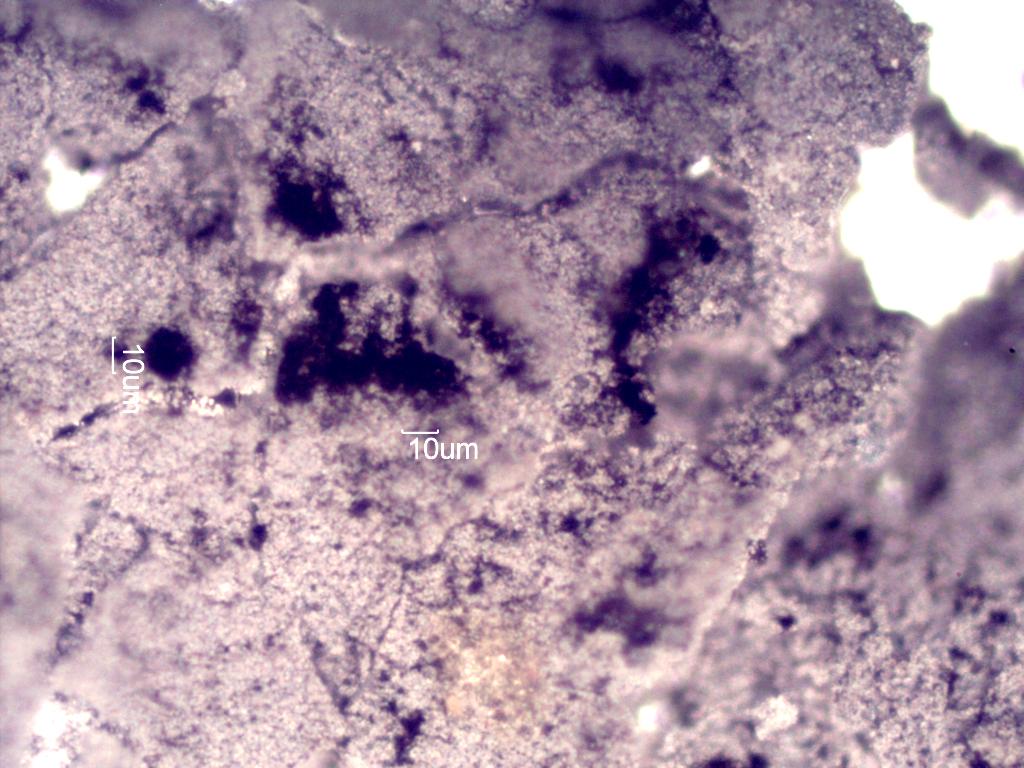Charred Paint from a House Fire
This is from an environmental tapelift collected in an
apartment that experienced a fire. This is the side of the paint
surface that was exposed to the flame. Most of the carbon has burned away leaving
the colorless clay and rutile particles to form this surface.
Reflected Darkfield Illumination
Definition/Function:
The vehicle rich surface of paint films burn and as they burn they shrink, pulling the
film of paint from the substrate. Some paint films are self-
extinguishing but the vehicle may be charred or burn away leaving the inorganic
materials on the surface of the film.
Significance in the Environment:
Paint films are common in debris from fires where painted surfaces have burned.
Characteristic Features:
Charred paint particles are flakes that have substantial thickness, typically tens of
micrometers, but have essentually parallel flat surfaces forming
the flake. The exposed surface is often white as a result of the organic phase being
consumed by the fire, leaving the rutile opacifier and clay
bulking agent forming the surface. If the back surface of the paint is showing it is
typically black as a result of charring from the heat and a lack
of oxygen on that surface.
Associated Particles:
References:


